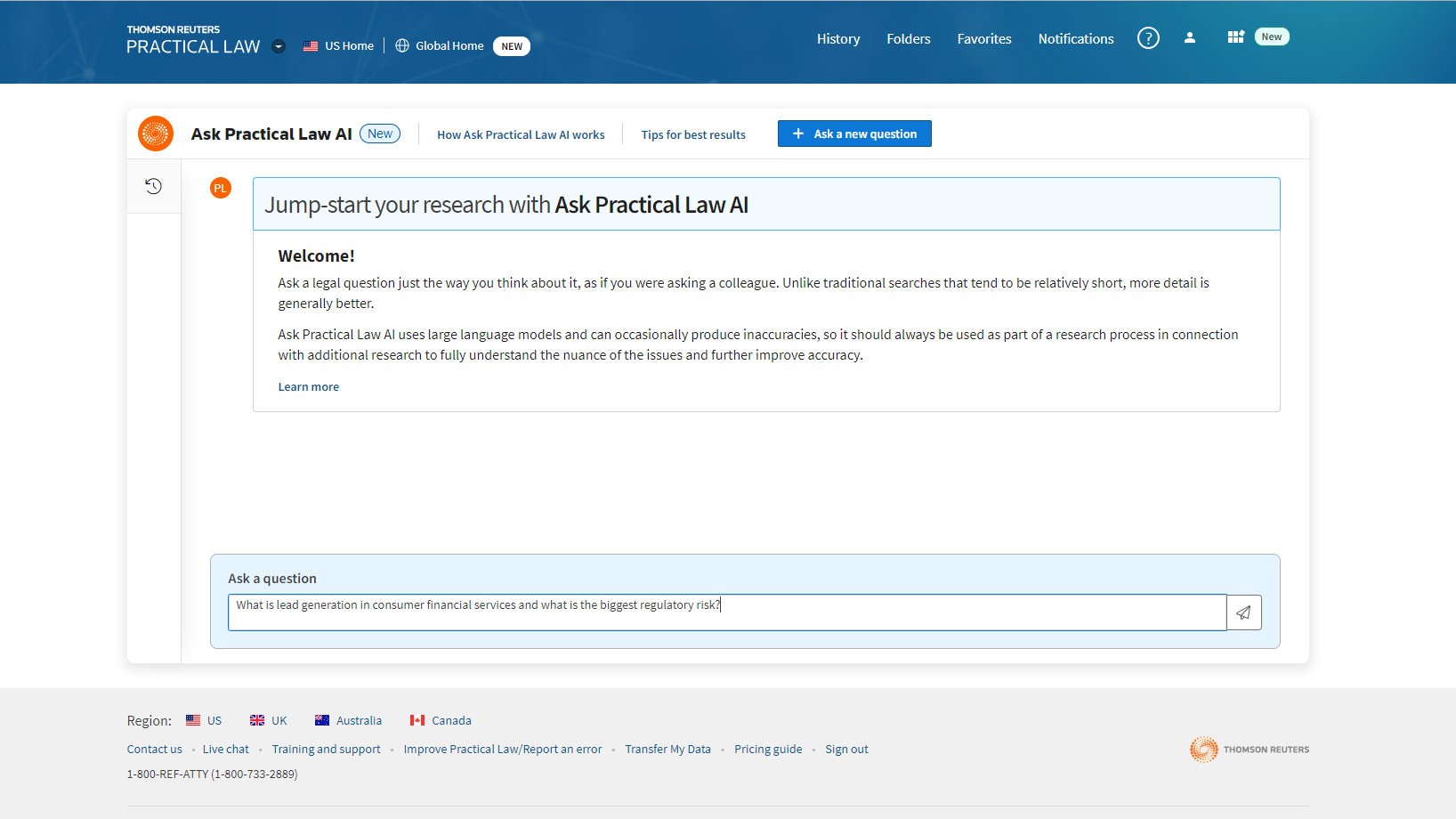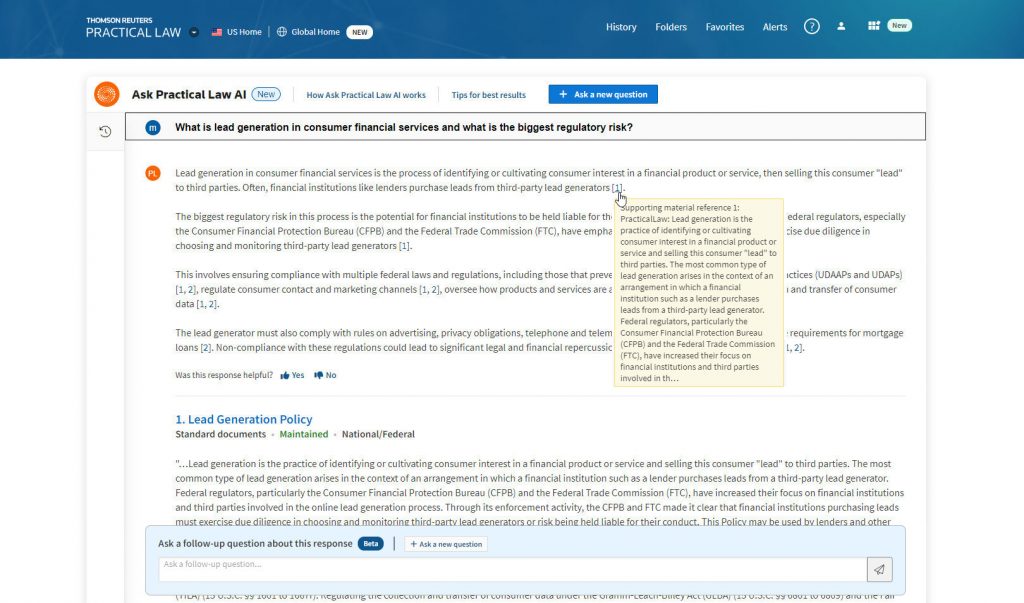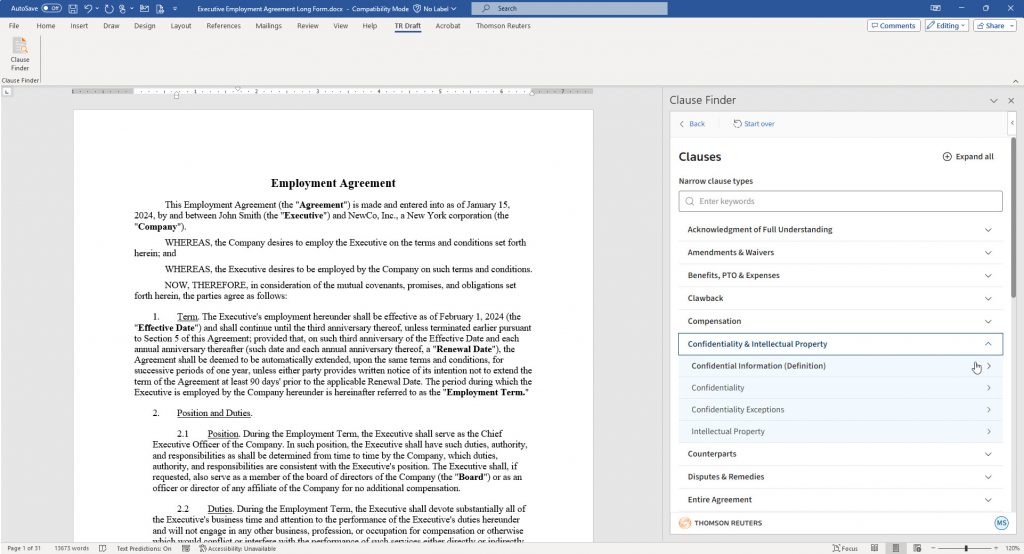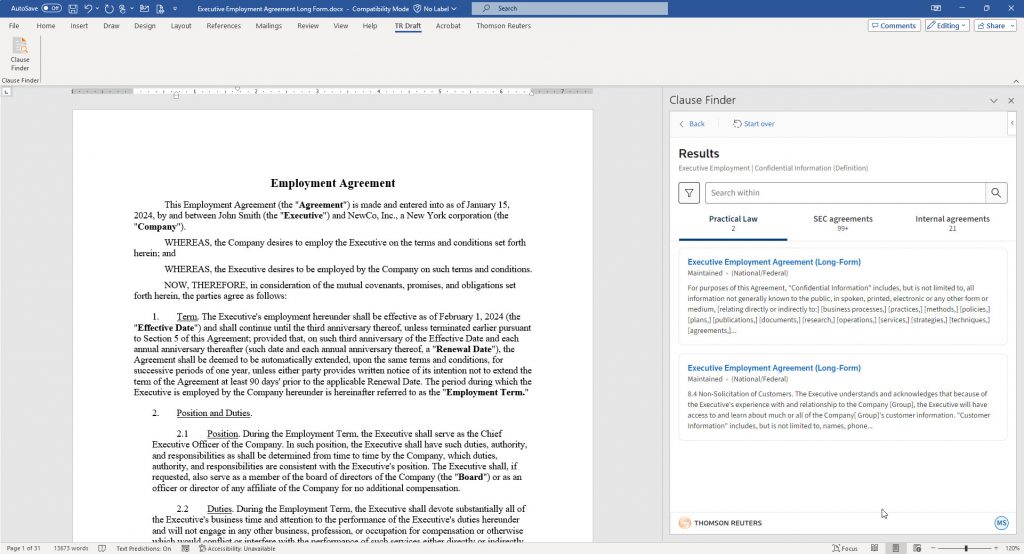In November, when Thomson Reuters announced the integration of generative AI within its flagship legal research platform Westlaw Precision, it also announced the beta version of a generative AI integration within Practical Law.
Today, Thomson Reuters is formally releasing that generative AI feature in Practical Law, called Ask Practical Law AI, and also releasing a second AI-driven Practical Law tool, Practical Law Clause Finder.
Both features are available to Practical Law customers in the United States and will be available to customers in other countries later this year. Both are sold as add-ons, and for Ask Practical Law, users need to have the dynamic tool set.
“They’re both built on advanced AI technology and both both grounded in trusted Practical Law content and expertise,” Erica Kitaev, vice president, Product Management, told me during a demonstration Monday.
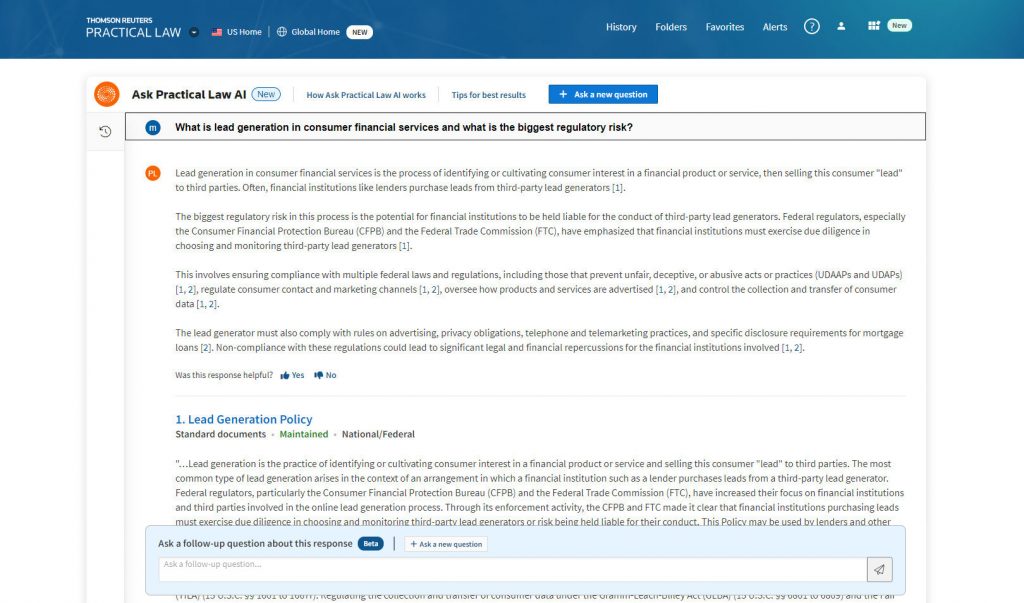
Ask a question in the chat interface and get a summary answer with links to the content that supports the answer.
Ask Practical Law AI provides users with a chat interface to access Practical Law content. The user simply asks a question and the tool provides a summary answer synthesized from Practical Law, including links to the sources within PL on which it based its answer. The user may also ask follow-up questions to further refine the response.
“This is a question-and-answer tool that deploys a large language model and provides synthesized answers to users’ natural language questions, grounded in PL content and delivered in an experience where users can easily validate those answers and continue through their information discovery process in PL,” Kitaev said.
In the demonstration I received, the answers were preloaded in browser tabs. Kitaev said that in typical use, the AI will take 25-30 seconds to generate an answer. Users can ask up to seven follow-up questions, but Kitaev said she has not seen users ask that many.
In beta testing of this tool, customers have said that it helps them get oriented more quickly and accelerates their research by connecting them to the appropriate resources, Kitaev said.
Practical Law Clause Finder
The second tool announced today, Practical Law Clause Finder, is embedded in Microsoft Word and uses supervised learning AI, trained by PL editors, to classify contract language and extract the most commonly negotiated clauses in transactional agreements. It can draw from PL content, SEC documents, or a customer’s own internal documents.
From within Word, the user would first pick the category of clause from Clause Finder’s taxonomy and then narrow it to a subcategory. The user can then select tabs to show clauses from PL, the SEC database, or the customer’s own document collection, if they choose to include it.
Clauses from PL include drafting notes written by expert attorneys that provide the user guidance on drafting and editing that clause. The user can also view recommended clauses in context within their source documents, and easily move back and forth from their own document.
For those customers that opt to include their own documents, the documents are available only to their internal users. The documents are stored securely on a single-tenant cloud instance and managed by someone within the firm will be responsible for managing the repository.
“Customers who wish to only have Practical Law content and SEC content in the tool may do so,” Kitaev said. “But for customers who opt in to including their internal documents in the Clause Finder tool, who opt into that relevant subscription, they will be able to create their own knowledge repositories for Clause Finder available only to their users.”
“We’re really excited about the future of drafting here at Thomson Reuters,” Kitaev said. “Clause Finder really is an exciting first step in executing against that drafting vision.”
 Robert Ambrogi Blog
Robert Ambrogi Blog